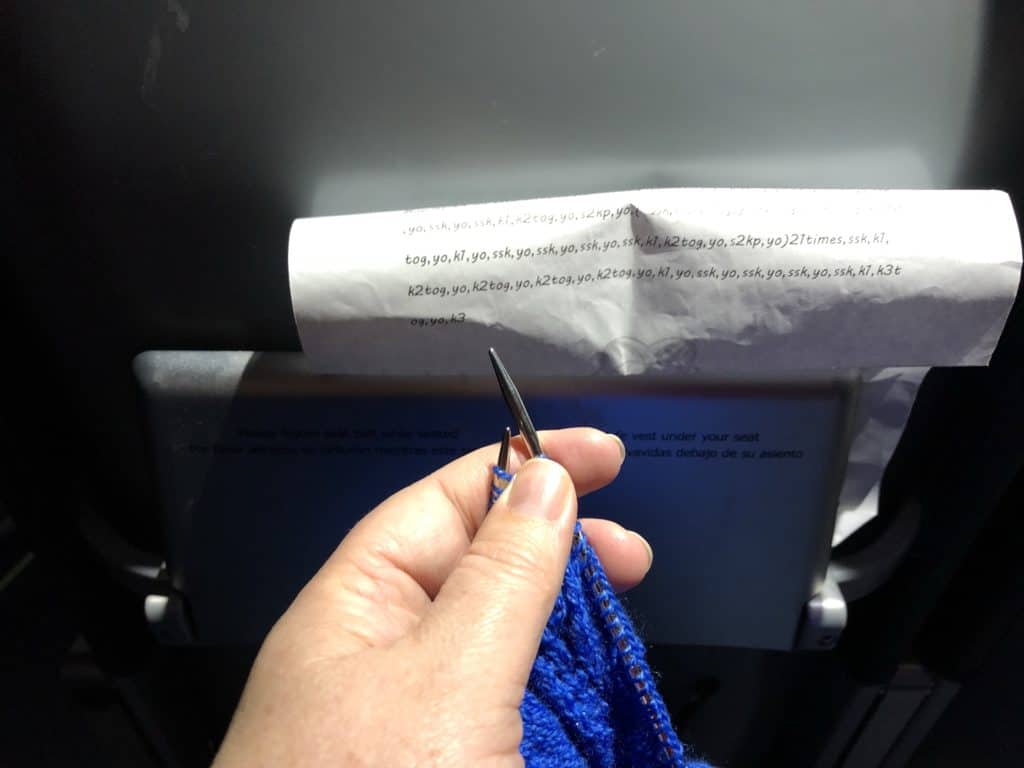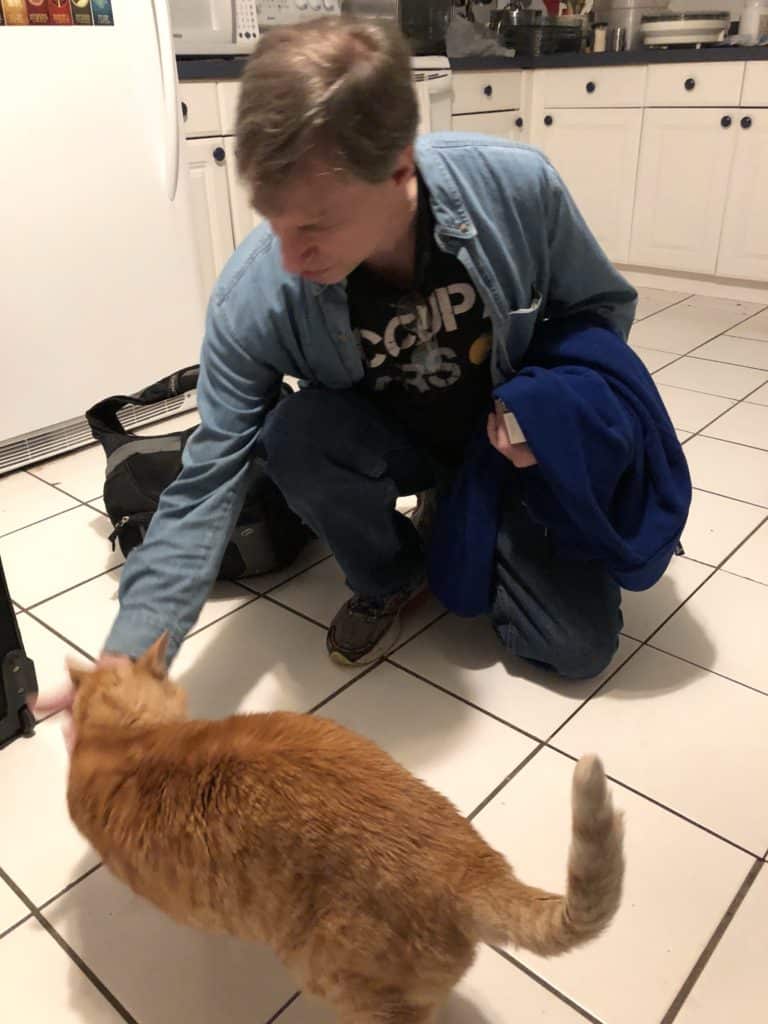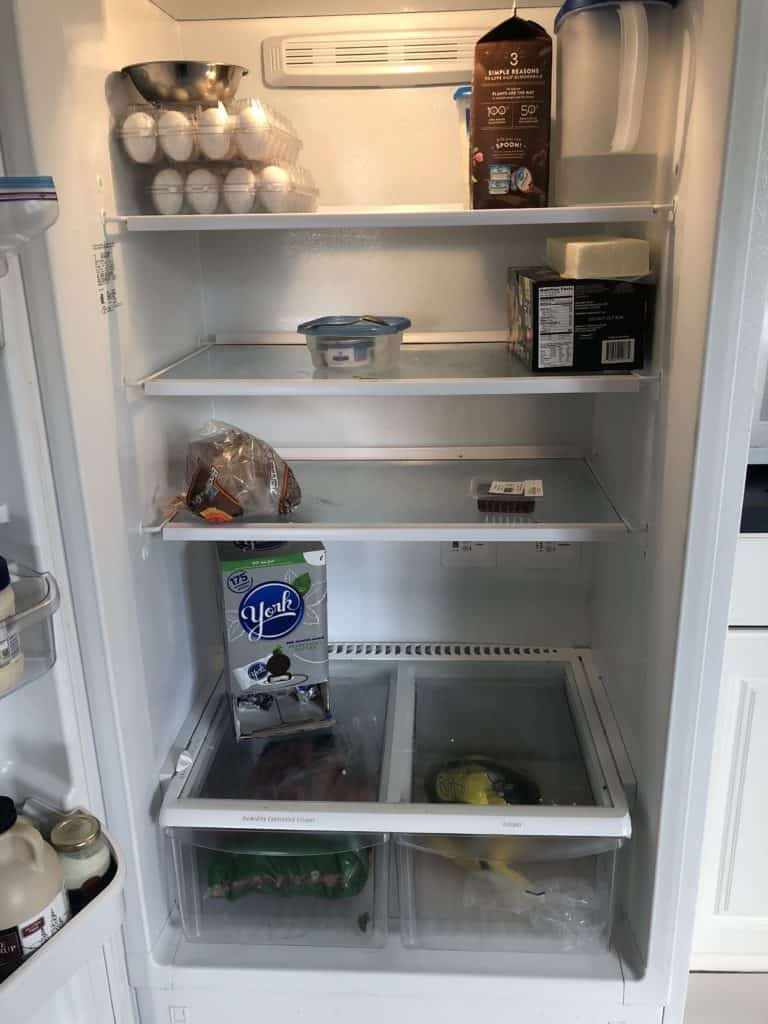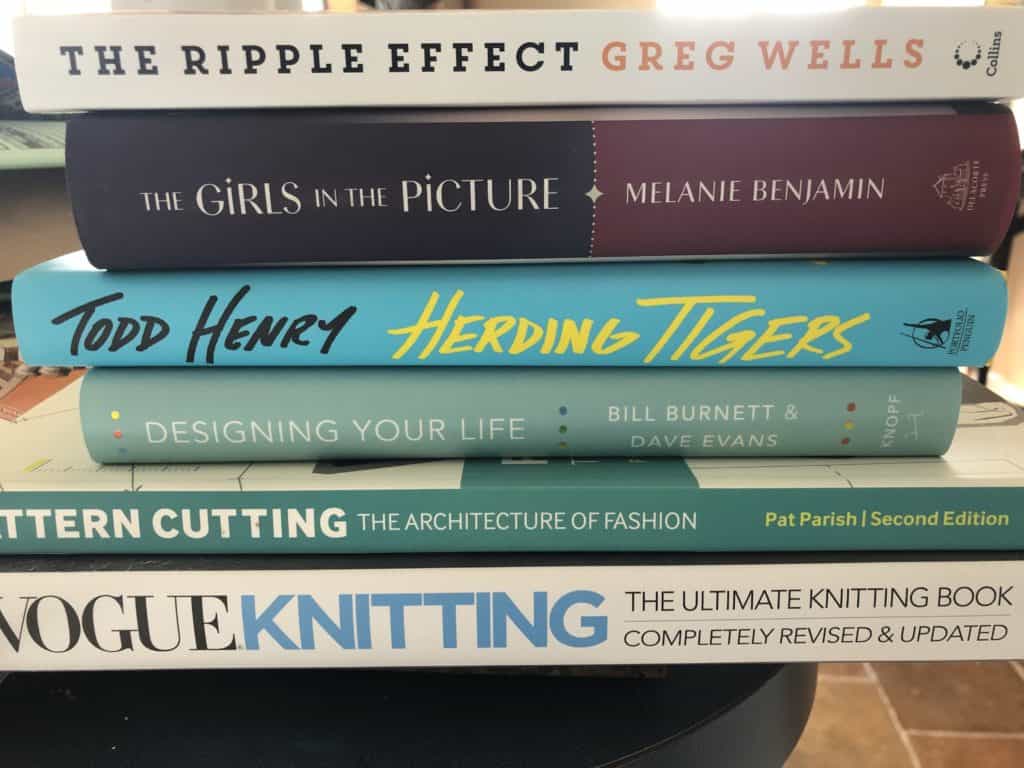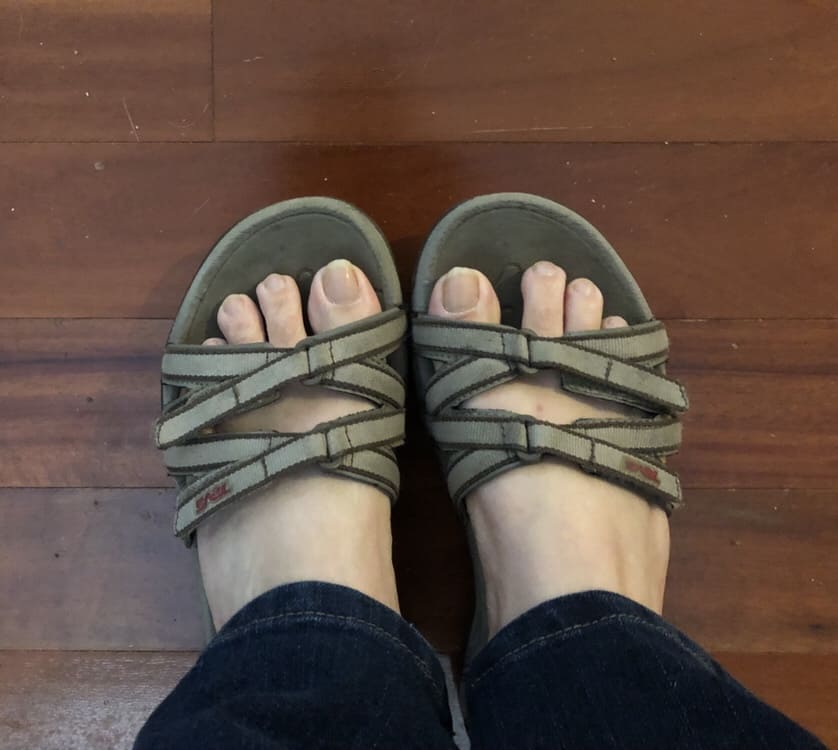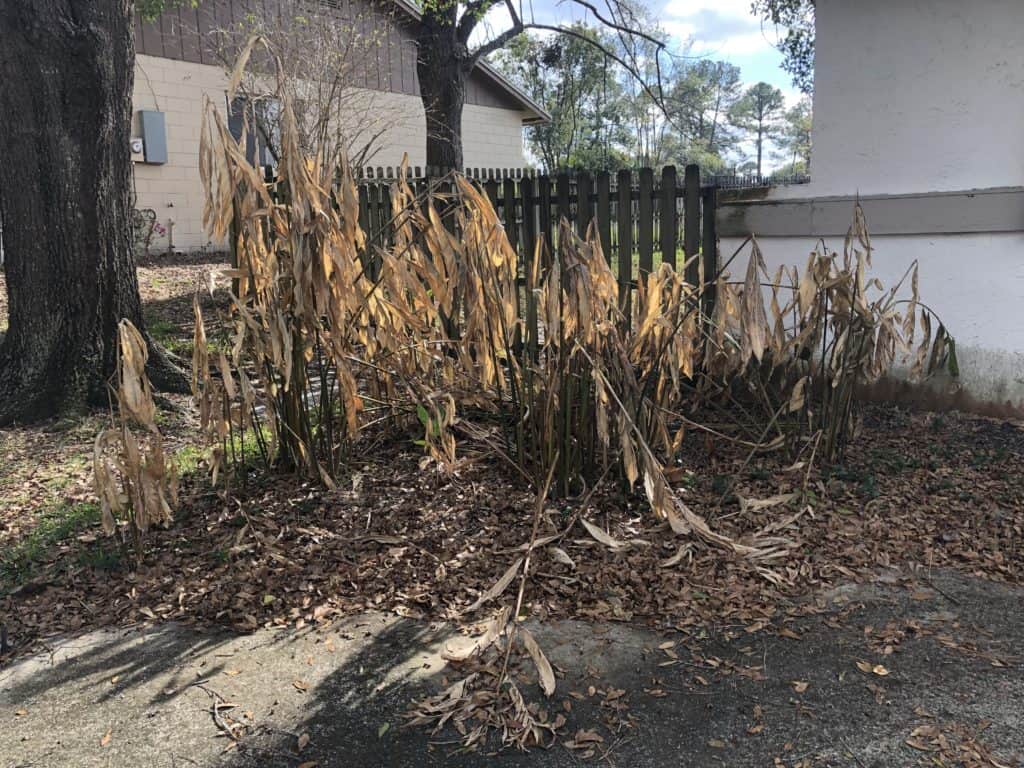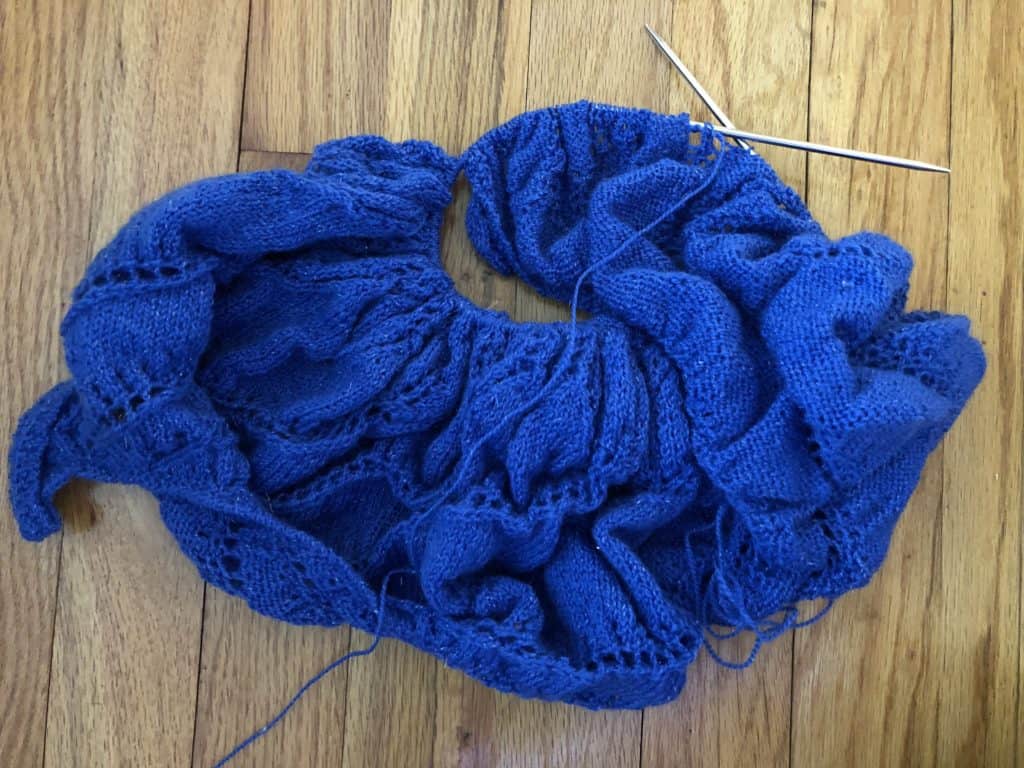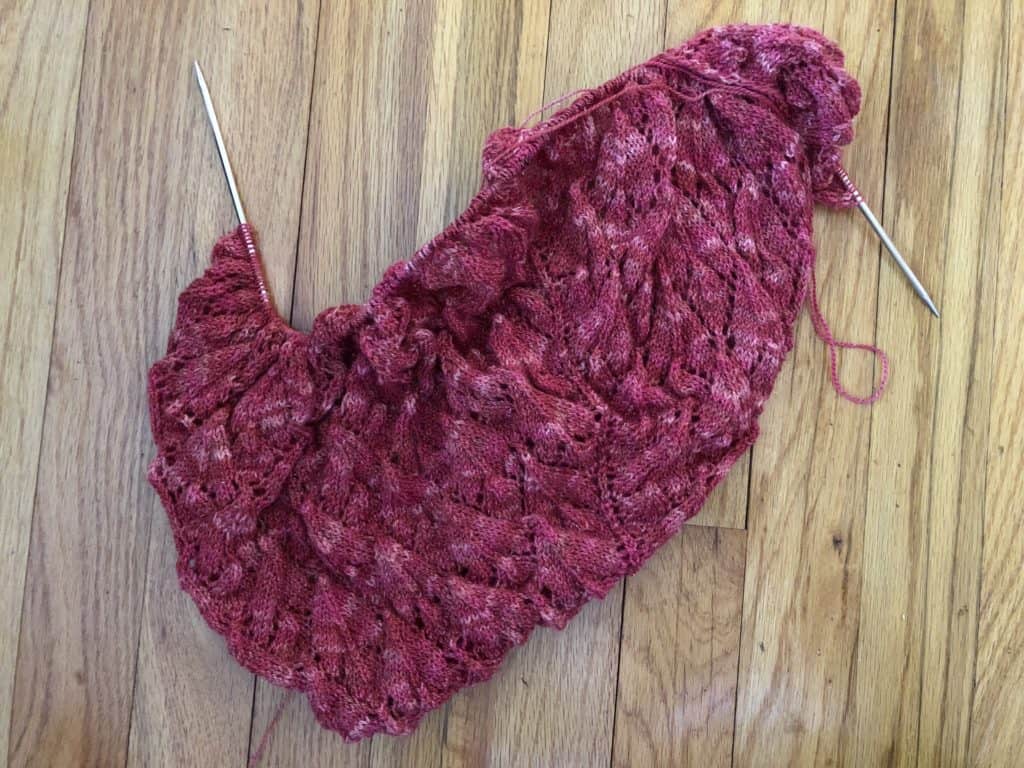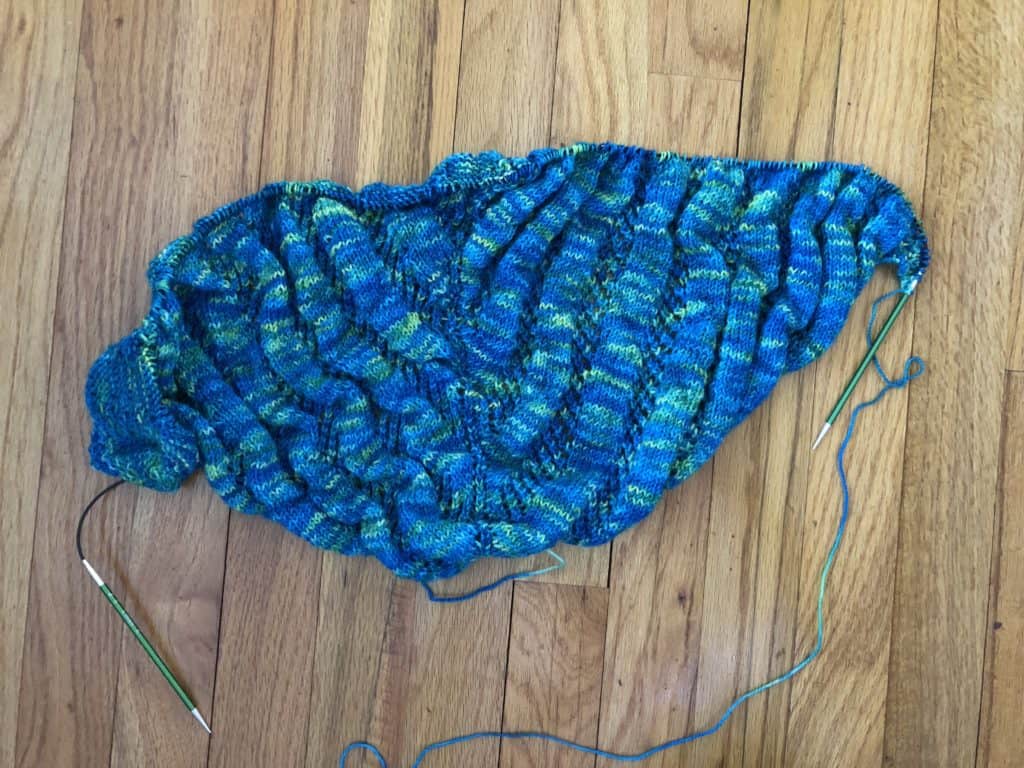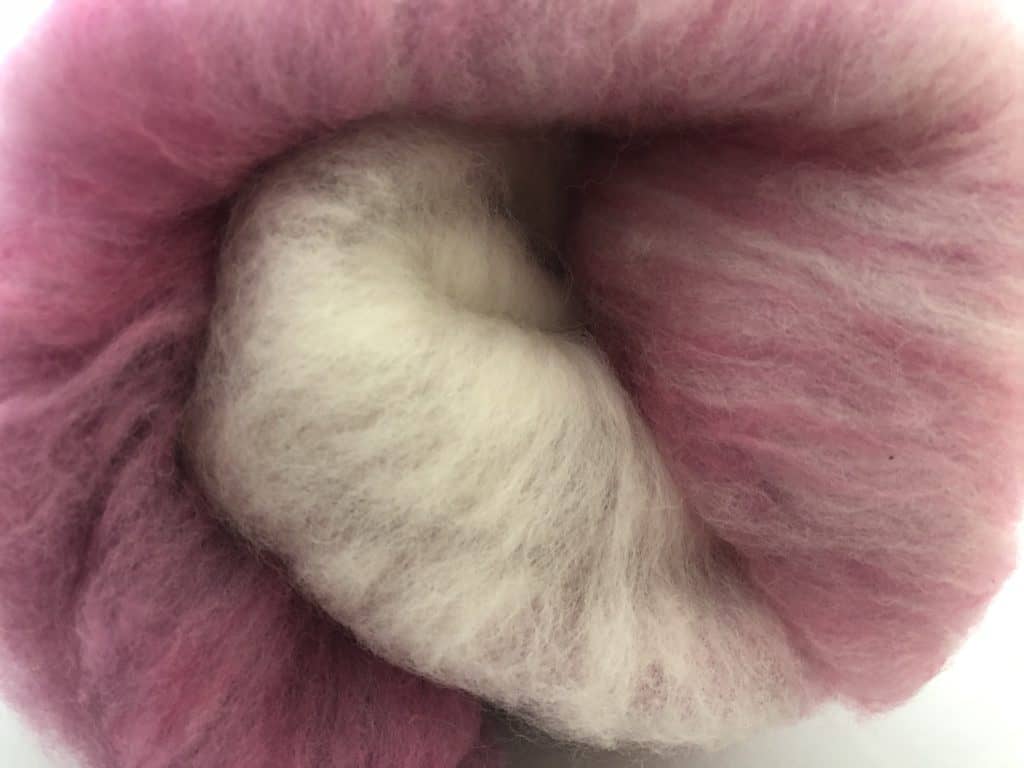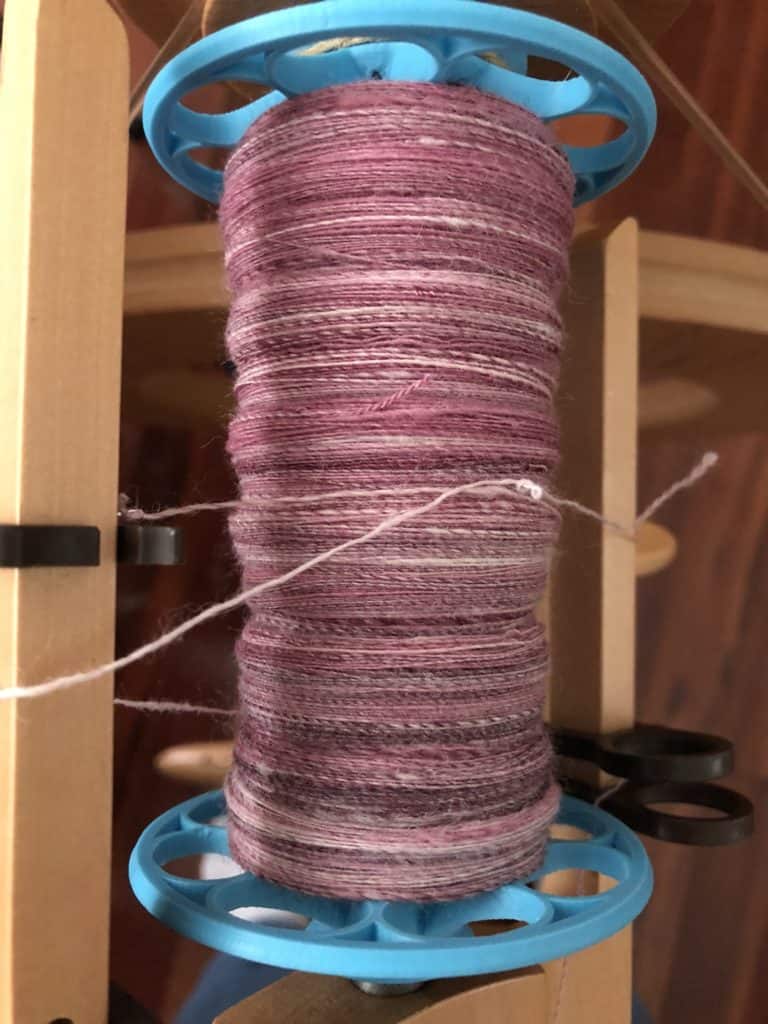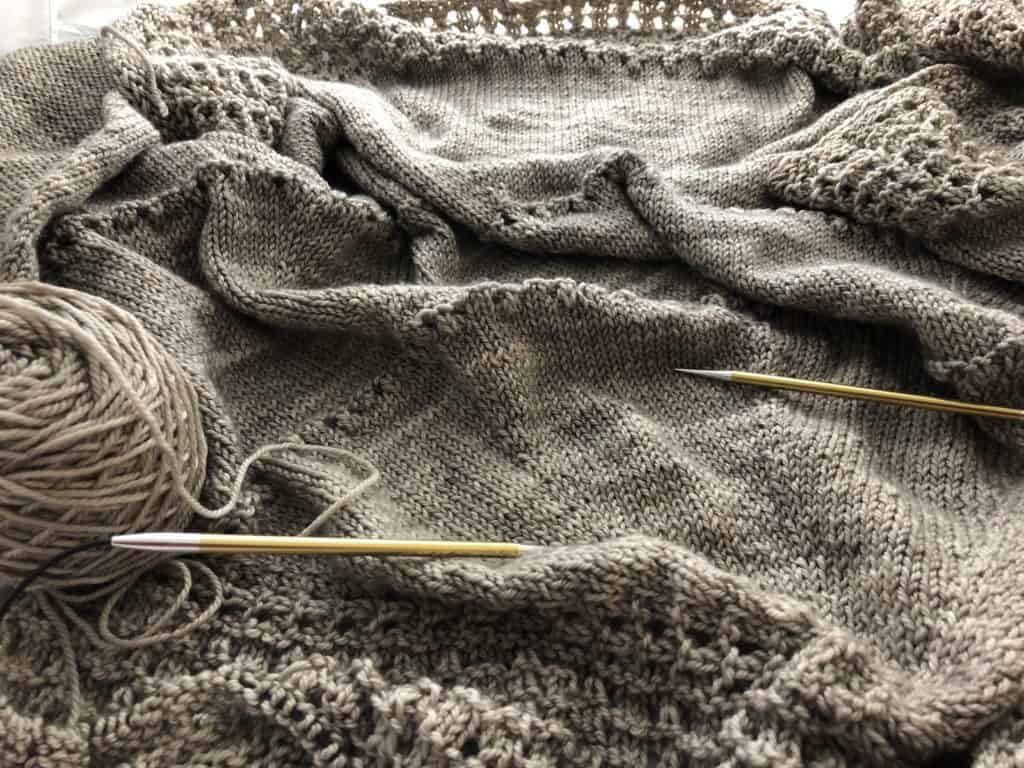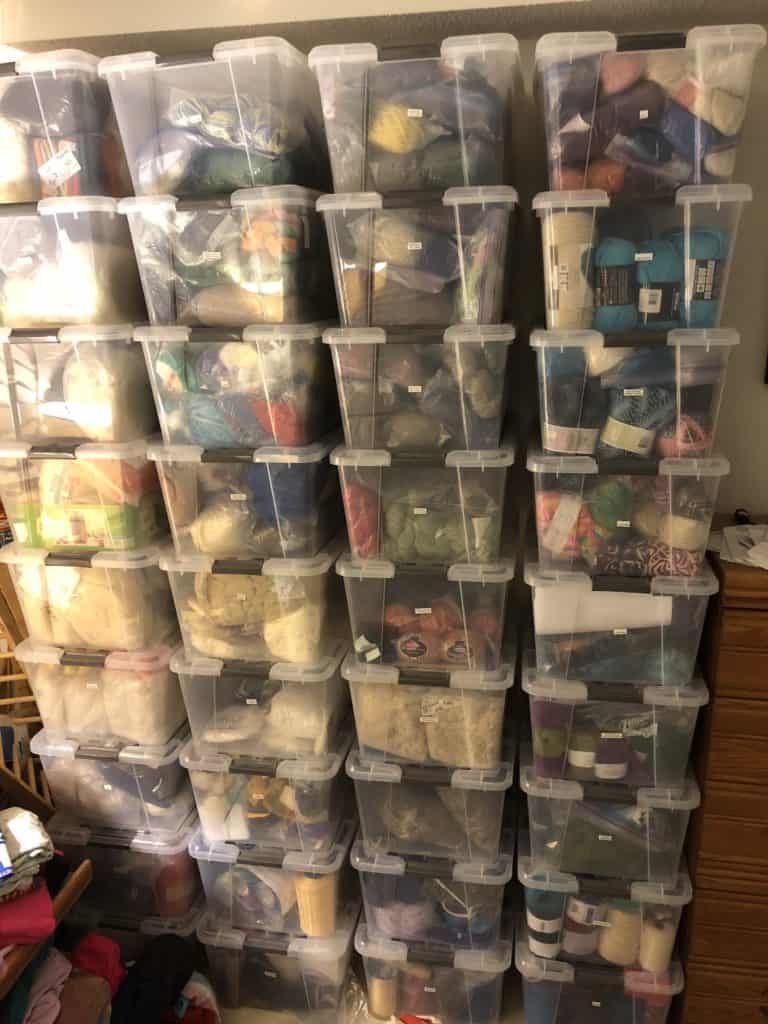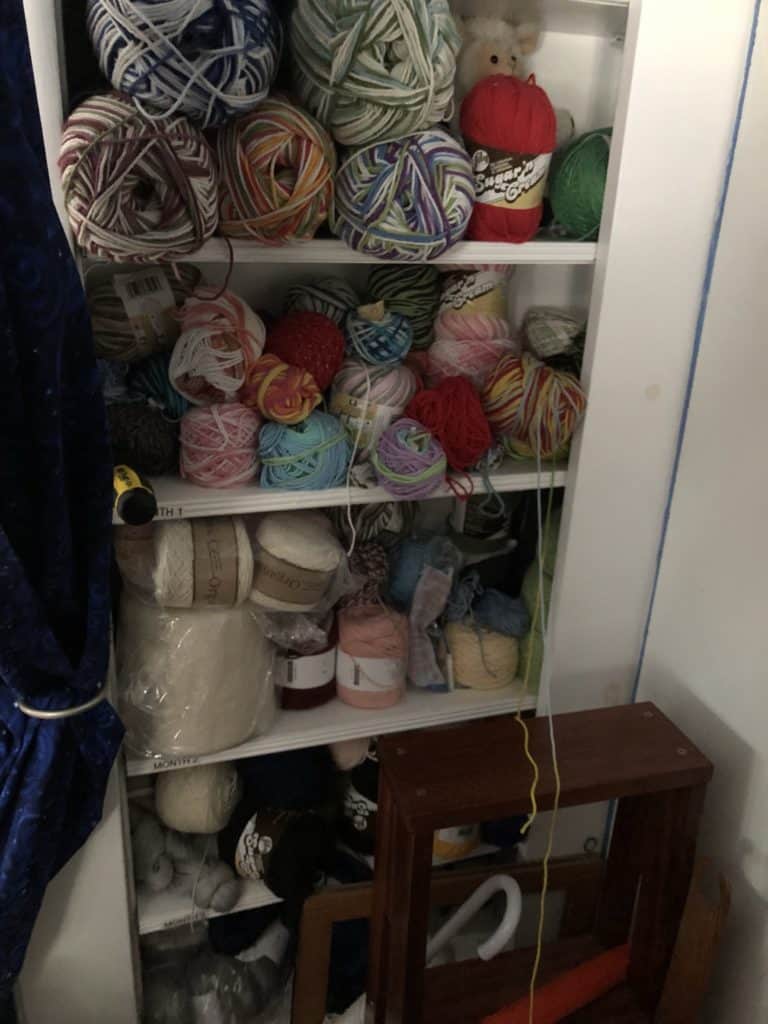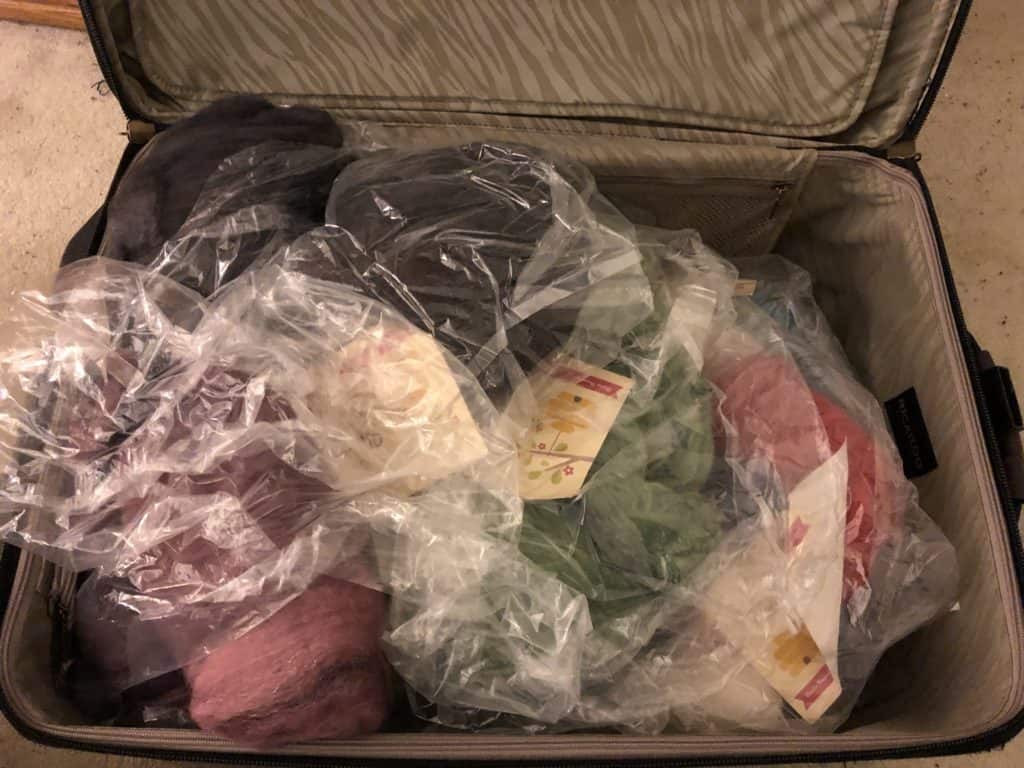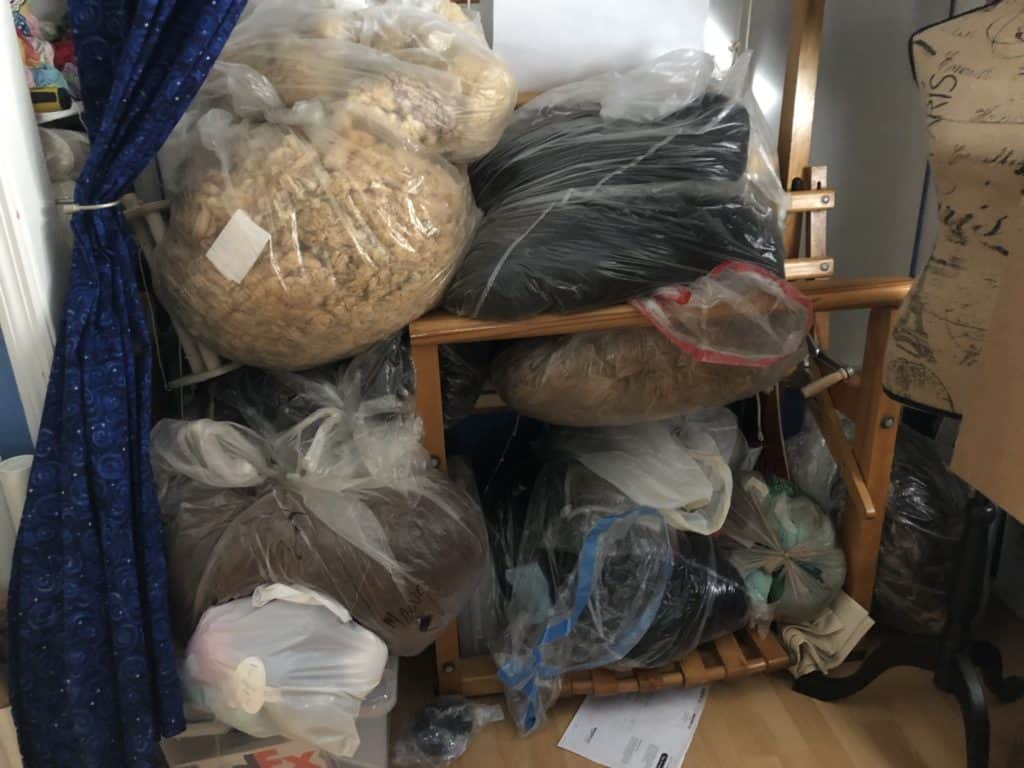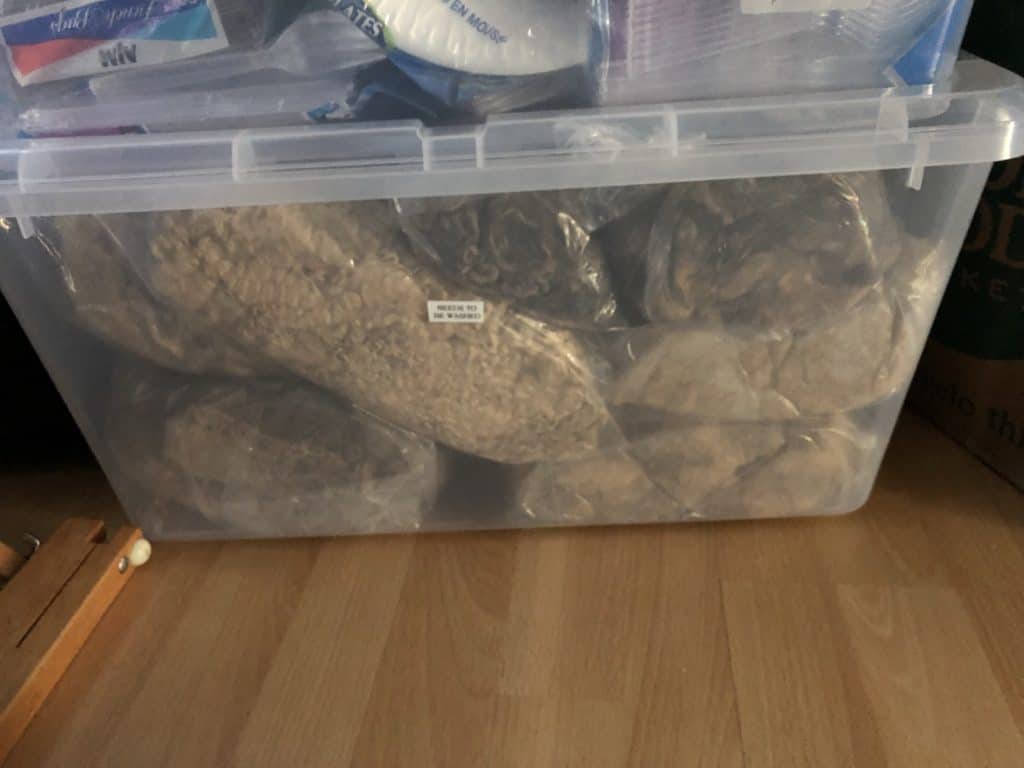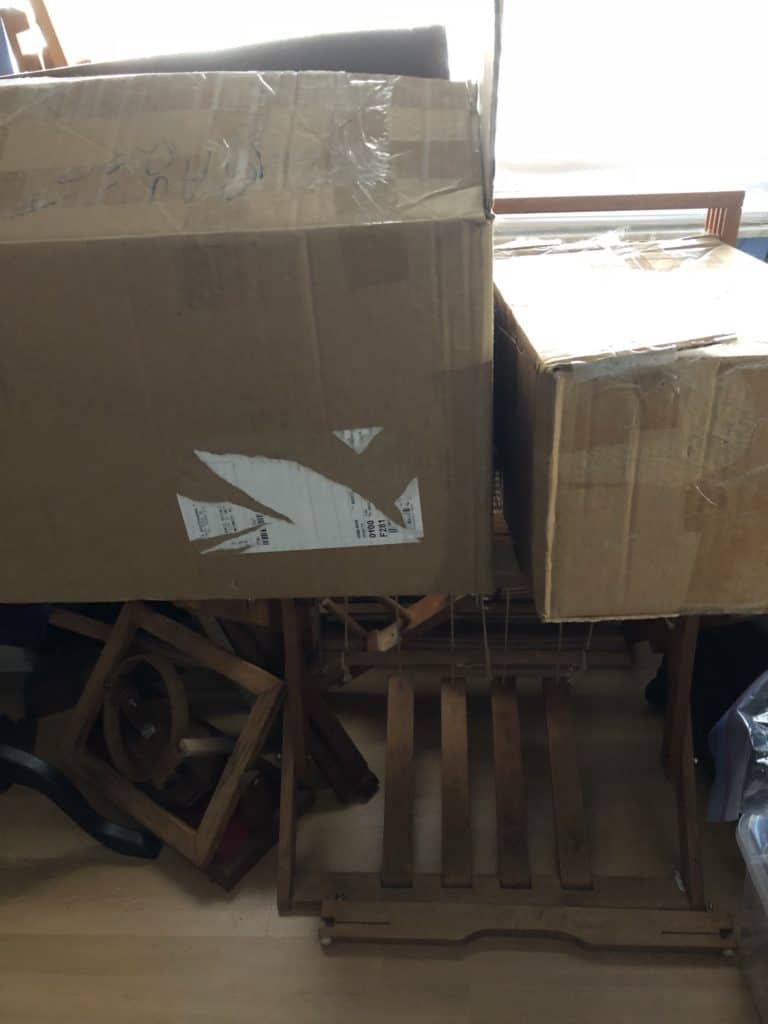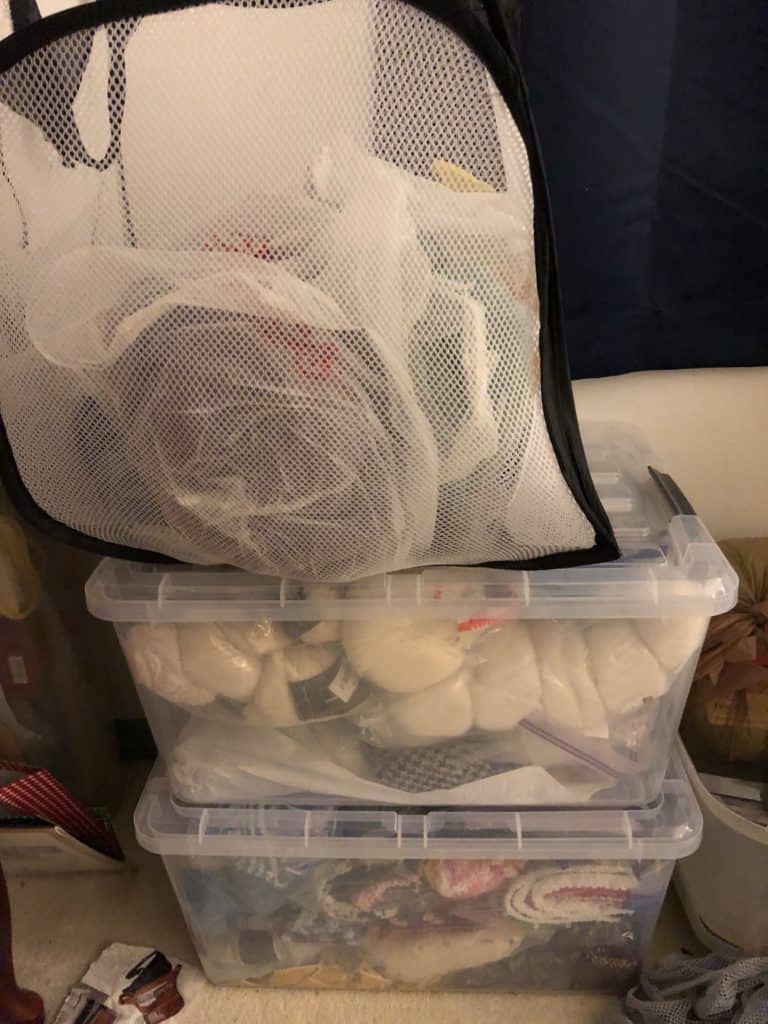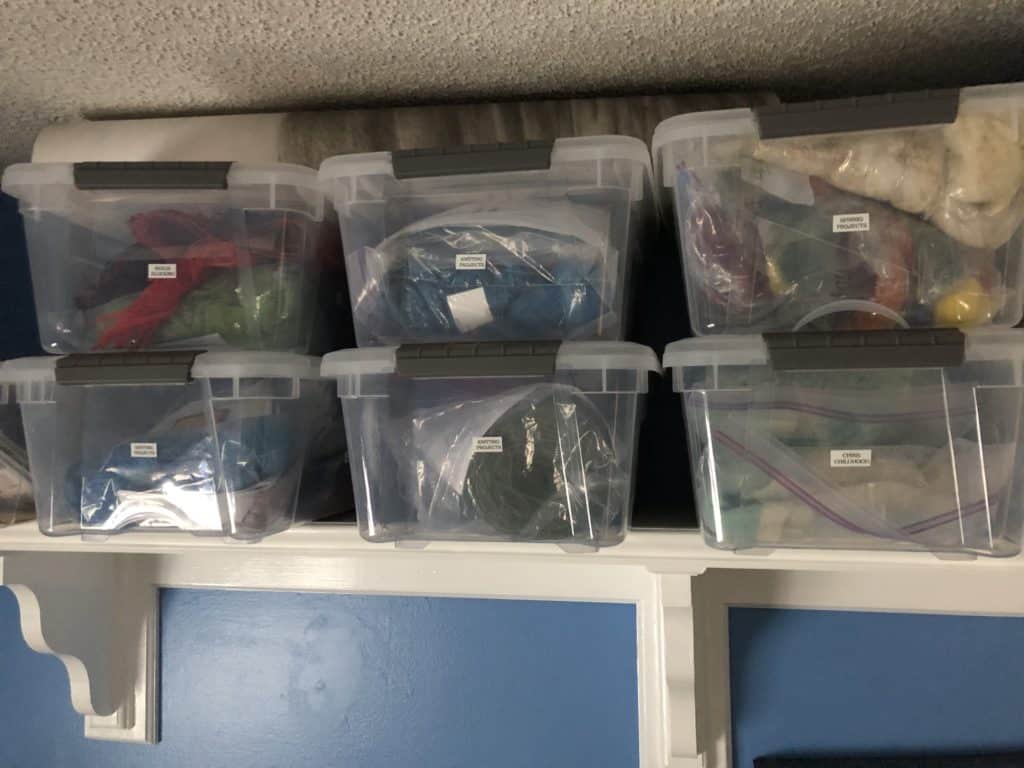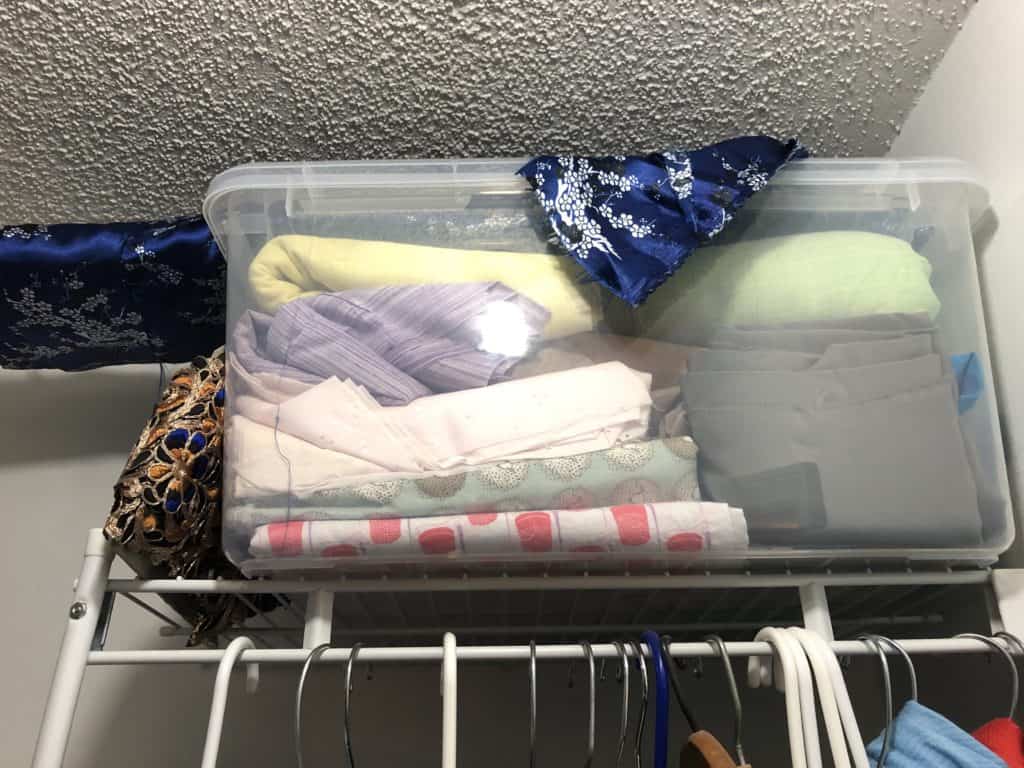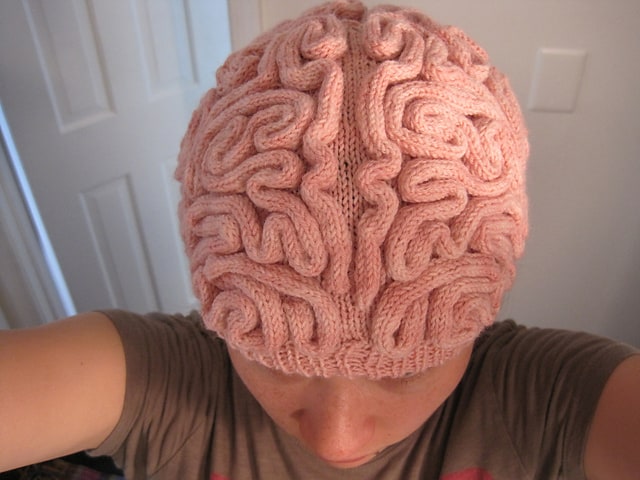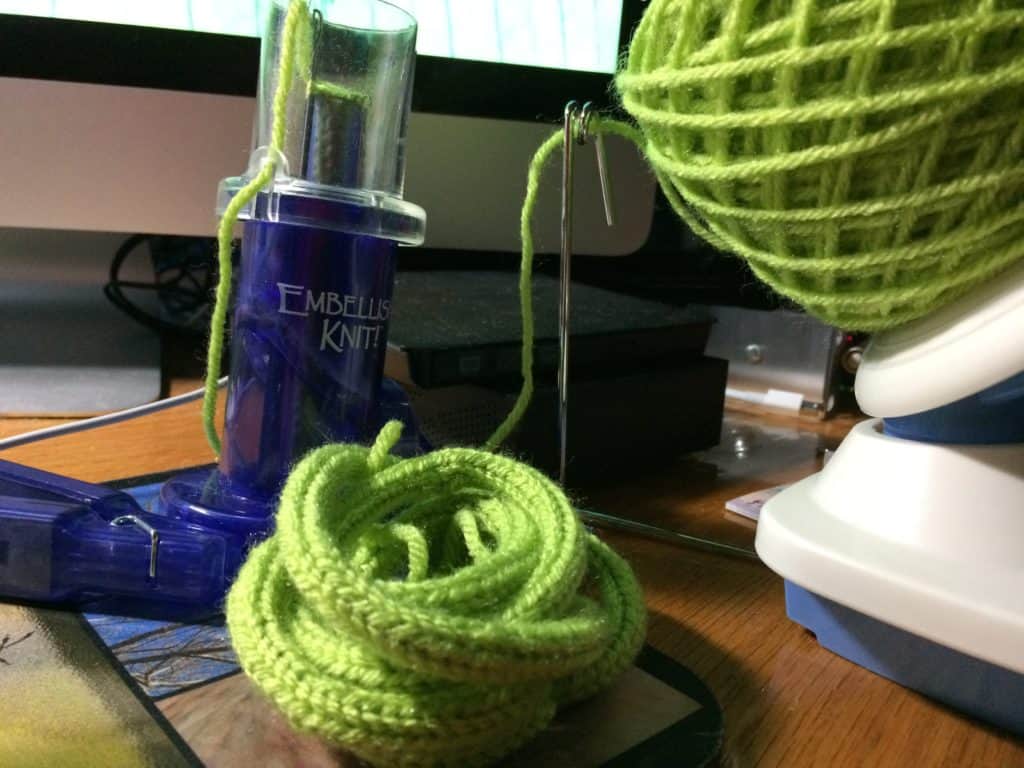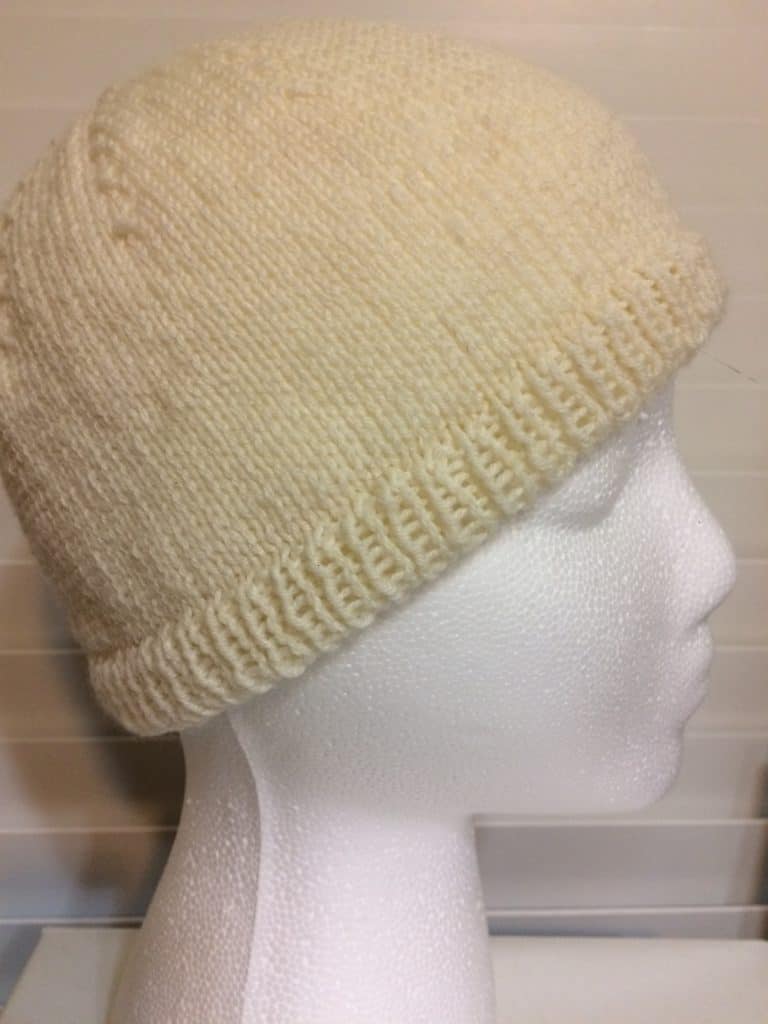While I was away, I wrote long posts with few pictures. Thanks for sticking it out. We got home last night, so I thought I’d do something I rarely do: a photo essay.
Knitting
Emergency Knitting, Again
Over the last several years, I’ve spent a lot of time doing emergency knitting. I’ve knit at the vet while one cat or another was having an emergency exam or procedure. I’ve knit in hospital rooms, while visiting with a friend or family member. I’ve knit at home or in the homes of family members, while keeping a quiet vigil during a loved ones’ last days.
Managing during difficult situations is one of the oft-cited benefits of knitting. Knitting is the perfect thing to keep your hands and, depending on the project and what you need, your mind occupied. The repetitive motion of the needles is soothing and the quiet click the needles make as they slide past each other is a white noise. You feel like you are doing something, which helps stave off the desperate realization that sometimes there is nothing that you can do. Knitting takes off just a little bit of that edge and allows you to be more present in whatever challenging circumstance you face.
Yesterday, I found myself picking out emergency knitting projects. We got the call that we knew would come sometime in the not too distant future. My mother-in-law passed away. We were able to find a flight for late in the day and we flew up to New Jersey. We don’t know yet how long we’ll be here.
This is a little bit different than the other times I’ve picked out emergency knitting projects. I had a little time to contemplate which projects to bring — I didn’t have to just grab whatever WIP I could find on short notice. I don’t know how long I’ll be here, so I don’t know how much time I will need to fill with knitting. I expect that most of the knitting I get done, will probably be done in the evening or other down times, as a way to relax. I won’t be knitting while exhausted or knitting in dark spaces, so I could bring more complicated knitting rather than a plain stockinette project.
All of this added up to lace. It takes a while and is perfect for occupying the mind when you need a distraction. Plus, I have several lace WIPs in varying degrees of difficulty, so I can make progress on reducing my pile of WIPs and account for different levels of concentration. I ended up bringing 3 projects, all of them lace shawl WIPs.
Begonia Swirl
The first project I packed for this trip is Begonia Swirl. If you’ve read my blog for a while, you’ll know that I’ve knit this before. A friend of mine borrowed it and accidentally felted it. A few months later, I bought the yarn to reknit it. I’m not sure exactly when I cast on, but according to my January 15, 2016 blog post, it was months before that. I’ve done significant knitting on it since then, but it has been months since I picked it up. Here’s how it looks right now.
This project was a good choice under the circumstances. It’s a straightforward pattern, mostly stockinette. I do have to count stitches as I knit, since I did not put in stitch markers to separate sections, but if I mess up it is easy to figure out where I am.
Morrigan
This shawl is one that I have never blogged about and I never created a Ravelry project for it. I cast it on in August 2015, knit about half of it and haven’t looked at it since. The pattern is Morrigan by Beata Jezek (Ravelry link) and I’m knitting it with Nerd Girl Yarns Stellar, a laceweight yarn that is 75% Merino, 20% Silk, and 5% silver-toned Stellina, in the Colorway Merlin. I picked the pattern because Morrigan and Merlin are both part of the King Arthur mythology. It’s not a difficult lace pattern, but of the projects I brought with me, this is the one that requires the most focus to knit because it is not a primarily stockinette pattern.
Linea
The final project is a shawl I started in mid-2107 and I have neither written a blog post about it nor added it to my Ravelry projects. This one is Linea by LaVisch Designs (Ravelry link). I am knitting it with Baah La Jolla (100% Superwash Merino) in Brazilian Emerald.
I sometimes test knit for LaVisch Designs and she earburns me to her Ravelry group whenever she has a new test knit available. This pattern is not one that I test knit; I bought the pattern after it was released.
Linea is a pretty basic knit and certainly the easiest of any of the projects I brought with me. One of my goals for 2017 was to knit some larger shawls. Linea is written for one skein of fingeringweight yarn, but I plan to use two skeins. I will increase the number of repeats of the body pattern until I think I have just enough to do the large border and bind off. I’m currently 3/4 of the way through the first skein.
WIP Wednesday: January 3, 2018
This week, I’m sharing my two active projects. I have a lot of WIPs / UFOs that are sitting around, waiting for me to get to them. As part of the inventory that I blogged about on Monday, I will be making sure Ravelry is up-to-date with those projects.
SassyBee Orchid
My current spinning project is two batts of SassyBee Orchid on Polwarth.
SassyBee Fibers (this is a link to her FB page as her website isn’t active) is a vendor at The Fiber Event in Greencastle, Indiana, which I have attended for the last 3 or 4 years. I love her batts and I have a pile of them. In fact, all the batts in the suitcase full of batts, pictured in Monday’s post about inventory, are SassyBee batts. In addition, one of the big bins in the big pile of bins is full of SassyBee batts. They are so beautiful, but I had not spun any of them. In fact, I had never spun from a batt at all. On the first Friday in December, I spent the day spinning as a demo during the Weavers of Orlando Annual Holiday Sale. My wheel was empty, so I grabbed a SassyBee batt and spun that the entire day. I’ve spun a little more on it since, but not a lot due to the holidays. I’m about 3/4 of the way through the first batt.
Mesa
Last year, my LYS had an Anzula trunk show. This cape (available on Ravelry) was one of the sample items Anzula brought with them as part of the show. I tried it on and loved it. I also thought my mother would love it. I bought the yarn and the pattern and intended to finish it for her birthday in March. Then for Mother’s Day in May. Then for Christmas. I only have about 10 rows of knitting left, then I have to weave in the ends, sew on buttons, and block it.
An Inventory
This year, we spent Christmas with my in-laws. My mother-in-law is in poor health. She has cancer and then got pneumonia. She was in the hospital for 2.5 weeks, moving to rehab on the Tuesday after Christmas. For a while, we thought she wasn’t going to make it to Christmas, but she did. For the moment she’s stable, but the cancer is advanced and at this point we count each day as a gift. During the time I visited with her, we talked a lot about her life and what has been important to her and what is important to her now. “None of that stuff matters to me anymore,” she said, referring to her physical possessions. What matters to her is speaking with and spending time with her people — her children, grandchildren, siblings, nieces, nephews, friends.
In November, my husband was laid off from his job. This was something we’ve expected for some time, so we’ve saved money and he got a severance payment, so we are not in an immediate financial crisis. He spent most of the last six weeks with his mother and is now starting to look for a job. We don’t know how long it will take for him to find a job, so we need to manage carefully so that the money we have lasts for as long as possible. As a result, buying yarn and fiber are definitely off the list! I must craft from stash.
These two factors have me thinking a lot about what really matters and about how I want to spend my time. I am feeling the need to let go of some things and consolidate others. I want to spend more time on my fiber pursuits. Over the last few years, I’ve acquired an astonishing variety of fiber books, tools, and supplies. I’ve acquired things at a much quicker clip than I’ve crafted them. Once upon a time, I kept Ravelry up-to-date, but I fell out of the habit. I feel as though I don’t really know what I have anymore and to make plans, I need to know what I have. It’s time for an inventory.
Fortunately, inventorying is in my blood. For most of my growing up years, my father worked in stock rooms. When I was very small, he worked in the warehouse of a local clothing store. When I was 11, we moved to a different state where he had a new job as the manager of a hospital stock room. My sister and I went to a private school in the same town as the hospital, which was a 30-minute drive from where we lived. We commuted with my father. Since we got out of school a couple of hours before he got out of work, we spent those hours at the hospital. We usually stayed in the cafeteria, working on our homework. Sometimes, especially on days when they were short-staffed, we hung out in the stock room, working on homework and occasionally answering the phone to take orders from the floors while the employees pulled and delivered the needed items. Twice a year, on a Sunday, the stock room closed for inventory. All the stock room employees came in, along with people in other administrative departments, and my sister and I. We counted every single item on every single shelf, balancing the inventory against the computer.
I started my personal inventory process before Christmas. I started by consolidating — putting away all the random yarn and projects scattered around the house. It’s a lot easier to do inventory when everything is where it belongs. It’s a little scary to flash my stash, but here’s the pix so you can see where I am now.
These bins are the main stash collection. Each of these is a 40 quart bin. One of the bins holds finished projects waiting to be gifted, but the rest are full of yarn and fiber. I sorted the fiber by type (wool, plant fiber, blends, batts, etc). There’s so much wool that it takes up 8 bins and I’ve alphabetized the wool by breed. I separated the yarn by weaving yarn and knitting / crocheting yarn. Then I sorted each of those categories size of the yarn.
These shelves hold the yarns made from plant fibers. It’s mostly cotton, but there’s some linen and bamboo in there also.
These batts have been living in this suitcase since I bought them last April because I can’t fit them anywhere else.
This pile consists mostly of raw fleece, waiting for me to wash and process it. There’s also a couple of bags of yarn that I haven’t put away. That’s my four-harness, 28″ weaving width LeClerc Fanny counterbalance loom under all that fleece.
This bin holds raw fleece in smaller quantities. There’s a variety of breeds in this bin, but no more than a pound from any one fleece.
These boxes hold fleeces that I bought and had processed by mills. I believe there’s three fleeces total in here. They are sitting on top of my four harness, 22″ weaving width Dorset direct tie-up loom.
These bins and the hamper on top of them hold WIPs. A couple of years ago, I conquered all my WIPs, but now I have a new pile.
These are smaller bins, about twice the size of a shoebox. They hold a couple of WIPs, including two or three that only need blocking, but mostly they are projects waiting for me to cast on. I matched yarn to patterns and sometimes the needles are with them also.
Finally, this is my fabric collection. Last spring and summer, I took sewing lessons. I’ve mostly sewed pillowcases, which we send to the pediatric oncology ward where my cousin works, for nurses to distribute to the kids. I actually have a lot more fabric than this, but everything I bought for pillowcases is stored at my mother’s house. This is everything I have at my house.
I have complicated feelings about all this stash. I’ll be writing more about it as I continue the inventory process. My goal for the next week is to get Ravelry back up-to-date. I’ve downloaded the spreadsheet of my Ravelry stash as a starting point. I’ll write an update next week, to share my progress and next goal.
Braaains
Today’s Yarn Love Challenge prompt is “Currently Making.” If you haven’t read my previous posts, this is the third in the series. If you’d like to start from the beginning, here’s the link to day 1. At the end of each post there’s a link to the next post in the series. If you’ve read the earlier posts, but missed yesterday’s, click here to catch up!
I’ve mostly been making brains. Perhaps you’ve heard about the March for Science scheduled for April 22? The date was set in early February, not long after the Women’s March. Crafters excited about the impact of the pussy hats immediately started discussing options for hats for the March for Science. Many scientists and science lovers expressed an interest in Brain Hats.
As even a non-knitter can probably tell, this hat is far more complicated than the brain hats. In the March for Science Ravelry group and Brain Hats Facebook group, there’s much discussion regarding better ways to make these hats, so sufficient numbers can be made before the march. The project breaks down into three primary tasks: (1) Creation of the skull cap, which is a straight forward and fast knit; (2) Creation of the i-cord, which isn’t difficult but is tedious and time-consuming; (3) Attaching the i-cord to the skull cap. Since I’m lucky to have a number of local fiber friends, I e-mailed them all and asked if anyone was interested in working on this project together.
My friend Katie has knit caps. As of last week, she’d finished 13 of them. I’m sure she’s finished a few more since last week! I am working on the i-cord for the brains. To make this process easier, I procured an Embellish Knit i-cord maker (Amazon Affiliate Link). It’s tough to find them now, even through Amazon, because they either have been or are being discontinued by the manufacturer. I managed to scoop up three of them on clearance at my local Jo-anns. I wind the yarn I’m working with onto a ball winder and leave it there while I crank the i-cord.
Keeping the working yarn cake on the ball winder helps in two ways. First, the ball of yarn doesn’t hop around all over the floor while I’m working. Second, the working yarn feeding into the Embellish Knit doesn’t get tangled with the finished i-cord coming out of the bottom of the machine. The i-cord doesn’t just move straight down as you crank. It tends to whip around in a circle and quickly become tangled with the working yarn unless you keep the two ends far apart.
The yarn in the picture above is Vanna’s Choice. The Embellish Knit instructions say that you cannot use anything thicker than fingering weight in the machine. However, after much experimentation, I found that I could use worsted weight yarns as long as they are smooth, slippery yarns. I have to pay attention when setting up the machine and I have to move the weight up to the base of the machine after I’ve cranked about six inches of i-cord. I also can’t crank as quickly as I would if I was using a thinner yarn. However, it is quick enough. Using this set up of Embellish Knit plus ball winder, I am able to crank through an entire skein of Vanna’s Choice in 45 – 60 minutes. Each skein is probably enough brains for one hat.
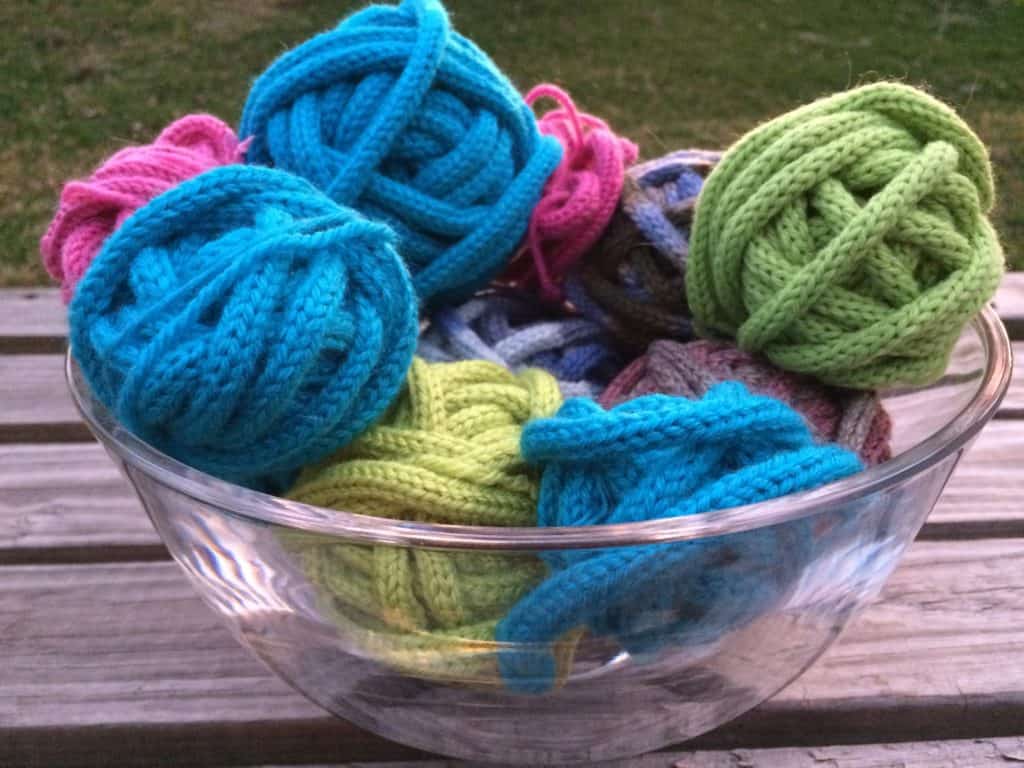
Sometime soon, we have to start attaching brains to hats. In order to make that process easier, I purchased a styrofoam head meant for displaying wigs.
Since attaching the brains will take both hands and since it is better for the hat to be slightly stretched, I needed a way to holding the hat still and stretched while I am working. In the previously mentioned Ravelry and Facebook groups, people have mentioned several options for stretching the hats, but many of the other methods (e.g. a balloon) still required you to hold the stretcher while simultaneously applying the brains. Even some using the styrofoam heads found it challenging to keep the head still while working. They make clamps designed specifically for holding these heads firmly on a surface, so I purchased one of those a the same time I bought the head.

